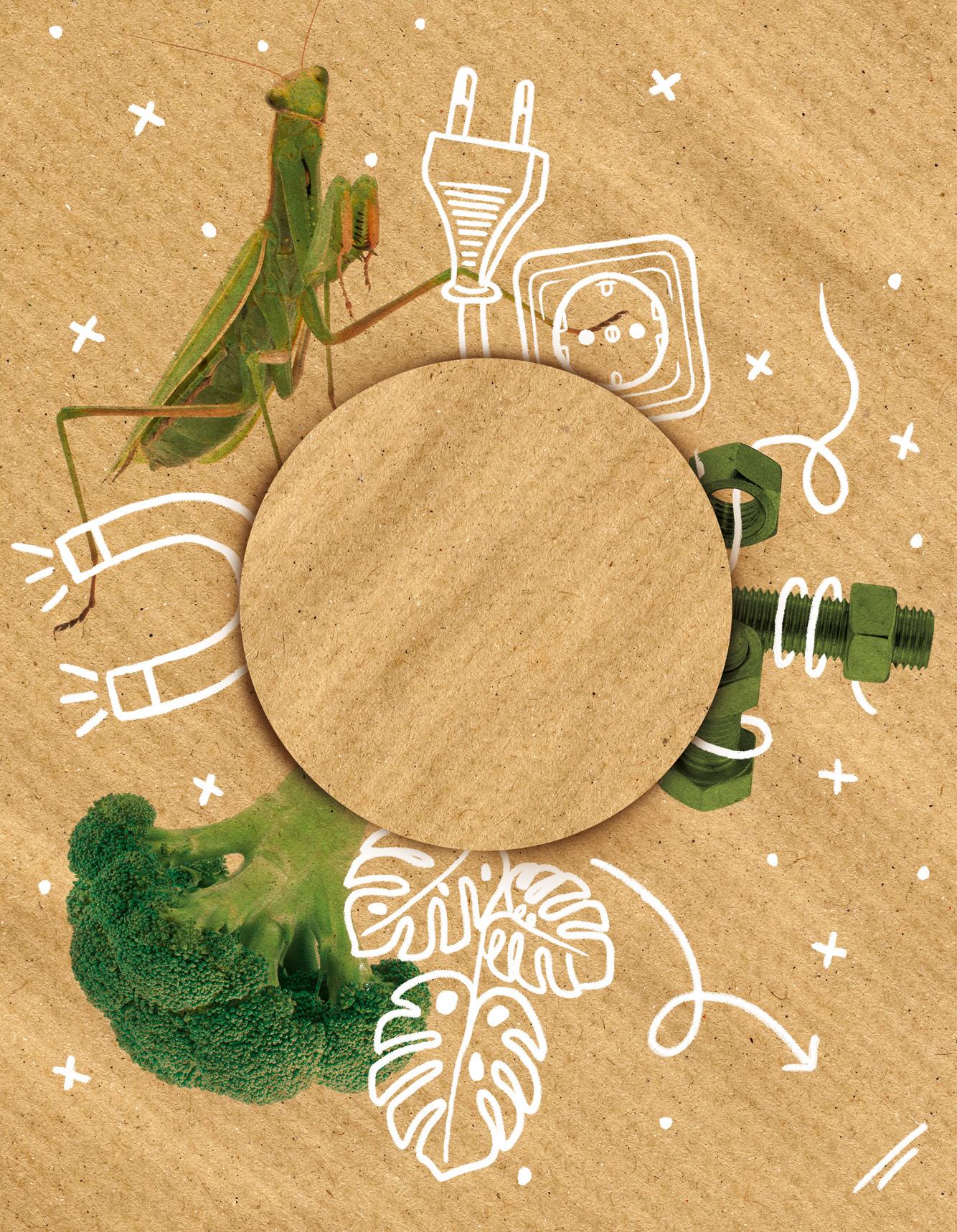
PRIMARY 4 12MONTH LICENCE DIGITAL PROJECT INCLUDED Globalaction
sample
Natural Science
• This appendix includes all the STEM tools you’ll need during the year for doing science, designing projects, using ICT and learning to program.
1 Discovering living beings
• Learning experience: A girl loves looking at her dinner under the microscope. It makes her curious about where foods come from and how they influence the body.
• Target in action: Analyse different dishes and make an exhibition about where the ingredients come from.
2 Discovering animals
• Learning experience: You’ll think about the different ways animals are represented in fiction.
• Target in action: Create a poster to compare an animal character you like with the real animal.
REPASO TRIMESTRE 1 STEAM: Margaret Mee
• Learning experience: A girl explains how she loves to be in contact with nature. It allows her to discover different landscapes and rocks.
• Target in action: Gather your holiday photos and make an album with fun facts about the landscapes.
• Learning experience: A girl moves from the countryside to the city and discovers that the materials in her house come from nature. She analyses the origins of the materials everyday objects are made from, and how to use them responsibly.
• Target in action: Write a sustainable biography for some everyday objects. Sustainable cities and communities

REPASO TRIMESTRE 2 STEAM: Mary Anning
5 Matter and energy

• Learning experience: You meet a boy who uses clothes, energy and other resources excessively. You’ll reflect on the matter and energy resources you use every day, and you’ll think about inequalities in access to these resources.
• Target in action: Analyse your own matter and energy needs and make a wall display about responsible resource use.
6 Forces and machines
• Learning experience: A boy discovers that machines have superpowers . He reflects on humans and their limited biological functions, and how machines can help us do more things
Sustainable consumption and production



• Target in action: Research the superpowers of modern machines and organise a small exhibition about them. Industry, innovation and infrastructure

What are we going to learn? PAGE LEARNING EXPERIENCE TARGET IN ACTION SDG M y toolkit 8
16 Climate action
34
Life on land
56
3 Discovering rocks and landforms
Life
land
on
72
4 Let’s protect nature!
96
110
TERM 3 REVIEW
INTERDISCIPLINARY
STEAM: Elena Gracía Armada
• The scientific method
• The project-based method
• Computational thinking
• What is a living being?
• What are living beings made of?
• How do we classify living beings?
• What are plants like?
• How do plants feed?
• How do plants reproduce?
• What are animals like?
• How do animals perform the nutrition function?
• How do animals interact?
• How do animals reproduce?
• How do humans perform the vital functions?
• Looking after yourself
• The Earth: a layered planet
• Rocks: much more than they seem
• Looking for rocks in the landscape
• Does the Earth’s surface change?
Competence-based activities
• We are part of an ecosystem
• How do ecosystems work?
• Ecosystem diversity
• Using ecosystems
• Do we abuse ecosystems?
• When we abuse ecosystems, what are the consequences?
• Block-based programming
• E-learning-ICT plan
• How do plants interact?
Competence-based activities
• Plant interaction. Colourful reactions!
• My job : plant doctor
• Let’s think: Lost beings
Competence-based activities
• My job : marine zoologist
• Let’s think : Nutrition flow chart
• Pyramid of advice
• Listen to your emotions
• My job: geologist!
• Let’s think: using algorithms to order rocks
• Where do we get rocks from?
• Folding rocks
• Changes in miniature
• Using ecosystems sustainably
• Competence-based activities
• What’s for dinner?
• Let’s think: ecosystem abstraction
• My job: fish farmer
• Measure your impact on the planet
INTERDISCIPLINARY PROJECT Mission Plastic-free: Seeing is believing
• What are the things around you made of?
• How do we classify matter?
• Can matter change?
• What causes movements and changes?
• Heat: energy transfer
• Why do objects move or get deformed?
• Types of forces
• Using our own force
• Machines in our lives
• Designing a machine
• Using a computer to program a video game
Competence-based activities
• Water, oil and chocolate
• Matter-property bingo
• My job and Let’s think: chef
• A water droplet’s journey
• Energy’s long journey to your house
• Cold, hot, warm
• The case of the mystery door
Competence-based activities
• Checking the effects of forces
• My job: mechanic
• Let’s think: Machines: prevention is better than cure
• Let’s think: Designing a machine and making a video game, step by step
KNOWLEDGE TO LEARN, APPLY AND INVESTIGATE
INTERDISCIPLINARY PROJECT · Eco-Action Magazine: Eco-action
PROYECTO INTLA CONTAMINACIÓN SILENCIOSA DE INTERDISCIPLINARY PROJECT · Silent
water pollution: Down the drain
1 Discovering living beings
What a mess I made! I decided to dissect my dinner and look at it under my new microscope. It’s amazing! All the different foods are made up of tiny bricks. Dad says they’re called cells and that food comes from living beings. Do you know anything about it?

What do you think?
Do you ever wonder where your food comes from?



Read the Context. Why is a planet-based diet good for the planet?
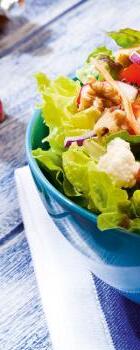
Context
In this unit...
Target in action
Analyse different dishes and make an exhibition about where the ingredients come from.
A plant-based diet is healthy for people... and for the planet. Follow the thread!
Features of living beings


1
What is a living being?
Cells and other levels in the body
2
What are living beings made of?
16
The main groups of living beings
3
How do we classify living beings?
Plant parts and plant classification
4
What are plants like?
Plant nutrition


5
How do plants feed?
Plant reproduction
6
How do plants reproduce?
The interaction function in plants
7




How do plants interact?

17 13
What is a living being?
Most of the food we eat comes from living beings. But what does this mean?
Living beings
Living beings are different from non-living things because they perform the vital functions. All living beings are made up of tiny structures called cells.
The vital functions
Living beings perform the vital functions , but non-living things do not.
All living beings perform three vital functions: nutrition, interaction and reproduction.
The nutrition function
Living beings perform the nutrition function to get substances from the environment. They use these substances for energy, to grow and to repair their body. This function also lets living beings excrete waste substances.
Living beings are heterotrophs or autotrophs , depending on how they feed – in other words, how they get energy and substances.
The two types of nutrition in living beings
Heterotrophs
Autotrophs

Autotrophs, such as plants and algae, use the sun’s energy to make their own food. They get food from other living beings.



Heterotrophs, such as animals, can’t make their own food. Instead, they feed on other living beings.
They make their own food.

18
1
The interaction function
Living beings use the interaction function to gather information from the environment and react to it.
The reproduction function
Living beings use the reproduction function to make new living beings (offspring) with similar or identical characteristics.

Reproduction can be asexual or sexual.
The two types of reproduction in living beings
Asexual
In asexual reproduction, one individual (progenitor) produces identical offspring.

One progenitor
Identical offspring
Sexual
In sexual reproduction, one male and one female individual (progenitors) produce offspring that are similar to them.
Two progenitors
1 Which of these features do all living beings have?

a) They are green.
b) They feed.
c) They are made up of cells.
d) They have hair.
Similar offspring
e) They use batteries.
f) They interact.
g) They produce offspring.
h) They eat meat.
2 Why is a robot not a living being? Explain your answer.
3 Find out what these words mean: nutrient, offspring, react. Say which vital function each one belongs to.

Take note!
If something performs the three vital functions, it is a living being.
19 U1
What are living beings made of?
What do you and a salad have in common? You are made up of cells!
All living beings – cats, flies, plants, algae, mushrooms and more – are made up of cells.
A cell is a tiny structure that can perform the three vital functions.

What cells are like
Cells are too small to see with the naked eye. We need to use a microscope.

Thanks to microscopes, we know that all cells have the following features :


• Membrane: a layer separating the cell interior from the outside environment.

• Interior: contains thousands of substances and tiny structures. They float in a dense liquid called cytoplasm.
All cells have the same structure, but not all cells are the same. Some cells are simple and tiny. Others are bigger and more complex. Cells can be different shapes.
1 Define the word cell.
2 What is in the cell interior?
3 Are there any living beings not made up of cells? Explain.
4 Copy the picture of the cell. Colour the interior structures however you like.



5 Ideas pool Let’s assume all cells are more or less the same size. Order these living beings from least to most cells. Explain your answer.
a) Elephant
b) Poppy
c) Bacteria
d) Ant
What cells are like
Living beings are made up of cells.
Cells
We can use a microscope to study cells
20 2
Microscope
Cell interior
Membrane
Tissues, organs and systems

How many cells do we have?
Some living beings have more cells than others.
Single-celled organisms
These living beings have just one cell. This cell performs the three vital functions. For example, bacteria and protozoa.
Living beings with more than one cell
Some living beings have more than one cell. Animals and plants have millions of cells and different types of cells.

The cells in complex living beings group together to make structures called tissues. Tissues group together to form organs. Organs combine to form systems.










6 Match the labels to the pictures. Then order the labels from the simplest to the most complex.

Organs combine to form systems

See ‘Let me tell you’ on anayaeducacion.es to learn more about cell organisation.








All the systems together make up the body
Take note!
All living beings have cells, but there are lots of different types. Some cells group together to form tissues.
U1 21
Cell Organ System Body Tissue A E B
Cells group together to form tissues
Tissues group together to form organs
System System System
System System + System + System System + System + D
How do we classify living beings?
There are so many different types of living beings. How can we organise them?
What types of living beings are there?
It is easy to identify different types of living beings that we can see. For example, flies, trees and human beings. If we want to classify living beings scientifically, we need to use other features. There are different ways to classify living beings scientifically. One way is to group them into five kingdoms based on how complex they are and how they feed.

Language Bank

Speaking. Make a survey about what living beings your friends like.


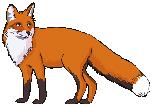
Writing. Write sentences with the result of your survey.
Kingdom Monera
Single-celled organisms. They are simple and very small. They include bacteria.







Kingdom Protista
Includes protozoa. These have just one cell and they are heterotrophs.




Also includes algae. These are autotrophs and have many cells.



Kingdom Fungi

These living beings can have just one cell or many cells. They are heterotrophs.
Kingdom Plantae
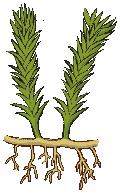
These living beings are autotrophs. They have many cells and have tissues, organs and systems.




Kingdom Animalia
These living beings are heterotrophs. They have many cells, and most of them have tissues, organs and systems.



22
3
Lost beings
These living beings travelled too far and now they’re lost. Can you help them return to their kingdoms?
First, match the pictures to the descriptions. Then draw the route to the correct kingdom. Use your notebook to write the route from the starting square (marked with an arrow) to the kingdom. But watch out – you can’t step on the names of the other kingdoms!

I’m really small. You need a powerful microscope to see me. I only have one very simple cell.


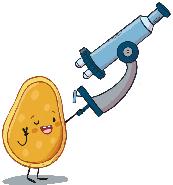
All my cells are similar. I feed on decomposing waste from other living beings.


I’m huge. I have millions of cells. They form different tissues, and these form organs like leaves and roots. I use sunlight to make my own food!
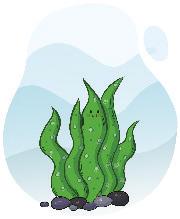



Take note!
We classify livingintobeings five big kingdoms.
23 U1
KINGDOM FUNGI
KINGDOM MONERA
1 a 2 3 4 5 6 7 8 9 10 11 12 b c d e f g h i j k m n l r s o p
KINGDOM ANIMALIA KINGDOM PLANTAE
KINGDOM PROTISTA
I’m really small, but I have millions of cells grouped together to form different systems. I feed on flower nectar.
I use sunlight to make my own food. I live in the sea. All my cells are the same.
theInyournotebook,write routeforeachliving 1a,being,likethis: 2a,3a,3b,...
Let’s think
What are plants like?
A lot of our food comes from plants. Plants work differently than we do.

Kingdom Plantae contains living beings with many complex cells. They are all autotrophs because they perform photosynthesis.

Most plants are attached to the ground in terrestrial environments. Some plants live in aquatic environments like rivers, lakes and the sea.
What are plants like?
Plants are incredibly diverse, from massive trees to tiny mosses. All plants contain different types of cells that form tissues. These, in turn, form organs with different functions:
Language Bank


Speaking. Tell a partner about what different plants have or haven’t got.
Writing. Write a description of plants, mentioning their parts and smaller components.
1 Are these statements true (T) or false (F)?
a) Some plants don’t perform photosynthesis.
b) All plants are terrestrial.
c) All plants produce flowers.
Plant parts
Leaves
They perform photosynthesis and the nutrition function. They are green. They can have different shapes, but most are flat.
Stem

It supports the leaves and keeps the plant upright. It often has branches.
Root
This part of the plant is underground. It attaches the plant to the soil and absorbs water and mineral salts.
24
4
How many types of plants are there?
There are many different types of plants. We usually classify them into plants that produce flowers and seeds for reproduction, and plants that don’t.
Plants without flowers and seeds

For example, mosses and ferns. They live in dark, damp environments.
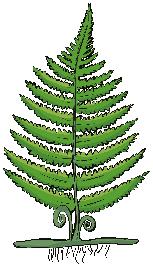
2 Choose two plants you like. Draw them in your notebook and label all the organs. Describe the plants and write down the group they belong two.
Plants with flowers and seeds
Some have dull flowers and the seeds are not inside a fruit. For example, a pine tree.
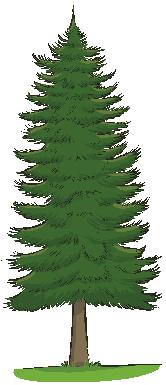
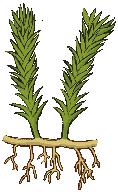
Some have bright flowers and the seeds are inside a fruit. For example, poppies, Spanish lavender, apple trees, etc.

Flowers
Many plants use these structures for reproduction.
Stamen: the male part of a flower. It produces pollen. Corolla: made up of petals. These are tiny, brightly-coloured leaves.

Pistil or ovary: the female part of the flower. It contains the ovules.

Fruit
The ovary transforms into the fruit after fertilisation.


Take note!
Calyx: made up of tiny green leaves called sepals. These surround the flower and protect it. Seeds
Most plants have roots, a stem and leaves. Some have flowers.
25 U1
How do plants feed?
Plants have a very calm and very special way to get nutrients: photosynthesis!
Plant nutrition
Plants are autotrophs. They perform photosynthesis to make their own nutrients. They also perform respiration to get a special nutrient called oxygen.
Plant nutrition step by step
• The roots absorb water and mineral salts to make xylem sap . This sap gets transported to the leaves. 1
• The leaves use sunlight to mix the xylem sap with carbon dioxide (a gas in air) to make nutrients. This process is called photosynthesis, and it releases oxygen. 2
• The nutrients formed in the leaves get mixed with water to make phloem sap. This sap gets transported all around the plant. 3
• Plants perform respiration day and night. They use this process to get oxygen from air and to produce energy (and nutrients). This process releases carbon dioxide. 4
1 Explain these concepts in your own words:
a) xylem sap b) phloem sap c) photosynthesis d) absorption e) respiration

2 In your notebook, match the words with the descriptions.
a) Respiration
b) Photosynthesis
c) Absorption

1. Plants get water and mineral salts through their roots.

2. Plants get oxygen and release carbon dioxide.
3. Plants get carbon dioxide and release oxygen.
26 5
Oxygen Carbon dioxide Carbon dioxide Xylem sap Water and minerals NUTRIENTS 1 2 Phloem sap 3 4 Oxygen
My job: plant doctor
Hi! I’m Penelope and I’m a plant physiologist. I love plants. My job is to study how they ‘work’. Most of the plants I study are crops like corn, beans and tomatoes. My research helps protect them from diseases and improves the harvest. I’m like a plant doctor!

A group of farmers visited us today. They are worried about their tomato plants. The plants are sick. Look at the drawings and read my notes.
The leaves have small spots and they look like they are covered in cobwebs. The plants are infested with red spider mites.
The leaves have dark round spots. The soil is too damp. The plants are infected with fungus.
1 The notes are mixed up. Which picture does each note belong to?



2 Which treatment is best for each tomato plant?

a) The tomato plant needs proper nutrition. A good organic fertiliser might help.
b) The tomato plant needs less water so the soil is less damp. An anti-fungal treatment might help too.

c) The tomato plant needs a treatment to remove the red spider mite infestation. A natural solution might help. For example, we can introduce ladybirds – these feed on red spider mites.


The leaves aren’t growing and they are yellow. When plants don’t get enough mineral salts, they grow slowly and become ‘malnourished’.


Take note!
Plants don’t need to hunt. They need light and water for their nutrition function.
27 U1
How do plants reproduce?
Plants need to make tiny offspring, just like other living beings. How can they reproduce if they can’t move?
The reproduction function in plants



Asexual reproduction
In asexual reproduction, part of the plant (usually the stem) develops a new plant that is identical to the progenitor.




Stolons
Special stems that grow above ground and produce new plants.
Fat stems that grow underground and produce new plants.

1 The picture Look at the pictures on the right. Describe what you see.

2 List five tubers and five bulbs people eat or cook with. Which ones do you know? Which ones do you eat? Choose two and research their nutritional benefits. Write your findings in your notebook.


Cuttings
Stem fragments. We can plant them in the ground so they produce roots and turn into a new plant.
28
6
A B
Bulbs and tubers
New plant
Taking a cutting
Stolon
Tubers
Bulb
Sexual reproduction
Many plants have flowers and perform sexual reproduction.
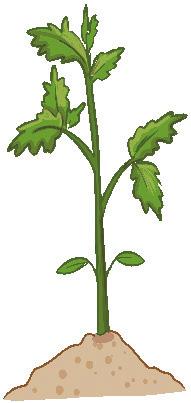
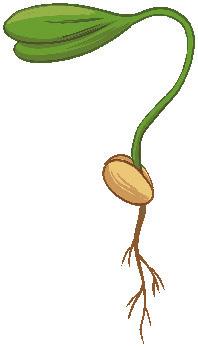

• Grains of pollen enter the pistil and join with the ovules to form seeds.
• At the same time, the pistil transforms into the fruit.
• When the fruit opens, the seeds fall to the ground and turn into new plants.

Sexual reproduction step by step

Insects, the wind or water transport grains of pollen to the pistil.



Take note!
Lots of things we eat are seeds or fruit. Can you think of any?


The pollen joins with the ovules inside the pistil to form a fruit with seeds inside.
Fruit
Seeds
The new plant grows into an adult plant. It flowers at a certain time of year.

3 Put these pictures in order. Use the diagram above to help you. Then explain this reproduction process step by step.
The seeds turn into new tomato plants.

29 U1
1 2 3 4 A B C D E
How do plants interact?
Do you ever wonder if plants know what is happening in the environment?
The nutrition function in plants
Plants are fixed to the ground. They can’t move around and they don’t have sense organs like animals do. However, they can still perceive changes in the environment and react to these changes. This is how they perform the interaction function. Here are some examples:
Language Bank


Speaking. Ask your partner what things plants can do.
Writing. Write some sentences comparing plants and animals.
Plants notice seasonal changes. In spring, they react to longer days and higher temperatures by flowering and producing leaves. In autumn, many plants drop their leaves when the days become shorter and colder.

Some plants can perceive the sun’s position. They turn their leaves to receive more light or heat.


1 Look at the pictures. Choose one you like and describe it in your notebook in your own words.

2 Find another two examples of how plants perform the interaction function. Explain them.


Many flowers open when there is lots of light. They close at sunset when there is less light.
Example of plant interaction

The leaves of mimosa fold when we touch them.

Some plants like acacias react when a herbivore (a giraffe, for example) attacks them. They produce a substance that doesn’t taste good.


30 7
Autumn
Spring
Plant interaction. Colourful reactions!
Plants can recognise certain colours. It’s incredible! The following experiment proves it.
Materials:


• Three identical plants.
• Three lights with different lightbulbs: one blue, one red and one white.
Procedure.
Expose the plants to one type of light for at least 24 hours.
You can see the results in the drawings on the right.
1 What happens to the plant stems when they receive white, blue or red light? Use the table to help you – tick the boxes to show what happens.
Type of light


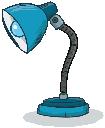
Red light
White light
Blue light
Turns towards the light
Doesn't turn towards the light
red light
2 How can you check if plants perceive green light? Design your own experiment.
3 Imagine you are a scientist and you want to answer the following question: do plant seeds need light to germinate? Design your own experiment to answer this scientific question. Write the steps in your notebook.
white light

blue light
Take note!
Plants can react to environmental changes in lots of different ways.



31 U1
W hat have I learned?
1 In your own words, explain the nutrition function, the interaction function and the reproduction function.
2 How are these things different?
a) Autotrophic nutrition and heterotrophic nutrition
b) Sexual reproduction and asexual reproduction
3 How are protozoa and algae similar and how are they different?

4 Do these living beings have one cell or many? What type of nutrition do they perform?
a) Protozoan
b) Mushroom

c) Cactus

d) Green algae
e) Bacteria

5 What is the result of each ‘sum’?
a) Organ + Organ + Organ + ... = ?
b) Cell + Cell + Cell + ... = ?
c) Tissue + Tissue + Tissue + ... = ?
6 Match the concepts and the descriptions.
1 It releases oxygen.
8 Why do some plants need insects and the wind?
9 Order the reproduction process for a plant with seeds:

If the seed falls to the ground, it forms a new plant.
The pollen joins with the ovule inside the pistil.

10 Label the structures.
The new plant grows into an adult plant.
The pistil transforms into a fruit.
The insect takes the pollen to the pistil.
a) Xylem sap
b) Photosynthesis
c) Phloem sap
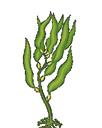
d) Respiration
2 It releases carbon dioxide.
3 A mix of water and mineral salts.
4 A mix of nutrients and water.
7 Reflect, answer and explain:
a) Can fruit and seeds form without fertilisation? Yes/No
b) Can fruit and seeds form without pollination? Yes/No
11 What part of a plant do you use when you eat...
a) spinach soup?
b) beetroot salad?
c) crisps?
Don’t forget to complete your photo album for this unit on anayaeducacion.es

Traffic lights. Apply the following colour code next to each activity in your notebook.
I know the answer.
I need help.
I don’t know the answer.
32 PORTFOLIO
1 2 3 4 B C A
TARGET IN ACTION
Analyse your dinner and exhibit your findings
1 It’s time to prepare your presentation! Choose one of the dishes from the restaurant menu. Copy and complete this chart (I think, I’m interested, I investigate) with your findings.
I think
What do you already know about the ingredients in the dish? Do you know what living being they come from? What part of the living being are they? What is their function in the living being?
I’m interested I
What questions do you have about the ingredients? Write down the things you don’t know yet.
2 Draw your chosen dish full size on a piece of white card. Colour it and cut it out. Draw some big arrows on coloured card and cut them out. Stick them to the dish to label the ingredients. Don’t worry if the arrows stick out. Write the following on each arrow:

a) The name of the ingredient.
b) The living being (or beings) it comes from and the kingdom it belongs to.
c) The part of the living being it is, and its function.



3 Set a table in class with a tablecloth, glasses and cutlery. Arrange your ‘dishes’ on the table and... voila! Enjoy the exhibition! You can even investigate your favourite dishes – just follow the same steps.
investigate
Do research on the Internet, in books or by asking other people. Answer the questions you wrote down in ‘I’m interested’.
1 In this unit, some things were probably easy to learn and some things were probably a bit harder. In your portfolio, write down three things that were hard and explain why.
2 Does your new knowledge make you think about how to protect plants?
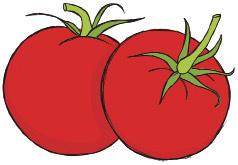

SET MENU
Starter Rice with tomato and carrot sauce
Salad with lettuce, apple and sweetcorn
Main courSe
Grilled mushrooms with garlic and parsley
Fried asparagus with cheese and walnuts
DeSSert
Natural yoghurt with mint
Pineapple sorbet with violet petals
The hardest thing to learn Why ... ... ... ... ...
U1 33
? H o w have I learned?
2 Discovering animals
Maybe I’m wrong, but I think animals are boring. I love cartoons with animal characters, and animals in video games. But real animals? They’re nothing special. They don’t talk, they don’t wear cool clothes, they hate playing chess or watching films... they don’t even like chocolate!

What do you think?
Do you like the animals in cartoons, films and video games? Do you agree with Pau? Are real animals less interesting than fictional ones? Read the Context. Do you think people need to learn more about real animals?
Context
The Earth is home to more than 7.5 million known species of animals. They’re everywhere!

I love my climbing shoes!
In this unit...
Target in action
Create a poster to compare an animal character you like with the real animal.
Follow the thread!
Animal characteristics

1
What are animals like?
Animal nutrition


2
How do animals perform the nutrition function?
34
Animal interaction
3
How do animals interact?

I’m going to make a tasty soup.
Animal reproduction





4
How do animals reproduce?
I’m a great detective. I love to follow clues.

The vital functions in humans
5
How do humans perform the vital functions?
¡Cómo me gusta este libro!

This book is amazing!
Physical and emotional wellbeing

6
Looking after yourself
35 15
What are animals like?
Animals are really diverse. Some are simple, like sponges, and others are more complex.
Animal characteristics
Living beings in Kingdom Animalia – including us – have some things in common:
• We have many cells and different types of cells.
• Our bodies have special parts that perform the different vital functions.
• We are heterotrophs. That means we eat other living beings.
• We can move around.
What types of animals are there?

We can classify animals into two big groups, depending on if they have a skeleton or not:
Invertebrates
These animals don’t have an internal skeleton with a vertebral column.
They are oviparous. This means they reproduce by laying eggs.
Vertebrates
These animals have an internal skeleton with a vertebral column.
Their bodies include a head, torso and limbs. The limbs can be fins, legs or wings. Some lay eggs (oviparous) and some give birth to live young (viviparous).
Some invertebrate groups
Sponges
They are aquatic. They don’t move around. They are bag-shaped. They take in water through their pores, filter it and extract microscopic beings to feed on.
Jellyfish
These animals have a jelly-like body. They have poisonous tentacles around their mouth. Some swim freely and others are fixed to the seabed. They are all aquatic animals.
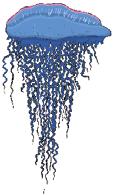
Annelids
They have a long narrow body divided into rings. They can be aquatic or terrestrial.



Molluscs
They have a soft muscular body. Many molluscs have an outer hard shell. Most are aquatic but some are terrestrial.


Arthropods


They have a hard articulated exoskeleton. They can be aquatic or terrestrial.
Echinoderms
Their body is covered with hard plates. Sometimes they have spines. They are all aquatic.

36
1
Some vertebrate groups
My job: marine zoologist
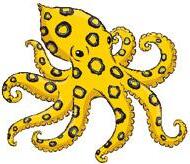
Fish
They are aquatic animals. Their body is covered in scales. They have fins for moving through the water. They breathe through gills. Almost all fish are oviparous.
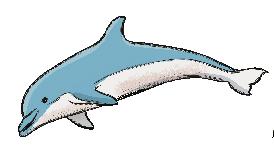


Amphibians
They are terrestrial but they need to live near water. Their body is covered in very thin, damp skin. They have four legs. They breathe with lungs and they are almost all oviparous.
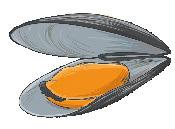

Reptiles
They can be aquatic or terrestrial. Their body is covered in scales. They have four legs, except for snakes. They breathe through lungs. Almost all reptiles are oviparous.
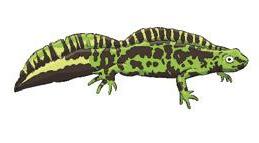


Birds
They are terrestrial. Their body is covered in feathers. They have a beak and no teeth. Their front limbs are wings. They breathe with lungs and they are oviparous.
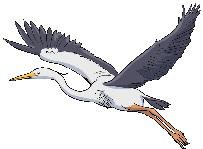
Mammals
They can be aquatic or terrestrial. Their body is covered in hair and they have four legs. They breathe through lungs. They are viviparous.
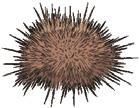

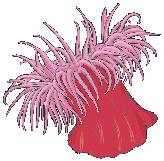
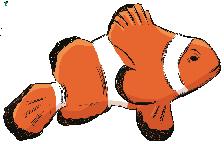
Hi! I’m Lucia and I’m a marine zoologist. I love my job, because I get to study animals that live in the aquatic environment. They’re really diverse. In fact, there are marine animals in all the different groups.

Today I’m making a poster about animal diversity in aquatic environments. I found these pictures. Can you help me classify them into the right invertebrate and vertebrate
Animals have special characteristics. These characteristics help us live in our environment.


37 U2
1 2 3 4 5 7 9 10 8 6
How do animals perform the nutrition function?
Many animals can’t eat chocolate like we do. But just like us, they need nutrients to survive.
The nutrition process
Animals do different things to perform the nutrition function:
They eat food
Animals are heterotrophs because they feed on other organisms. They digest food to turn it into basic nutrients


They breathe
Animals perform respiration to get oxygen from air or water.
They transport nutrients around their body and use them
Nutrients from food and oxygen get transported all around the body. Animals use them to get energy and to grow and repair their body. That’s why animals can stay active.
They excrete waste

The nutrition process generates waste substances such as carbon dioxide, urine and others. They must be excreted from the body.
Let’s think
Nutrition flow chart
Food
Language Bank


Speaking. Guess what animal your partner is thinking about. (2)

Writing. Write some sentences describing one animal. (1)

Oxygen
Nutrients
Waste (left over from digestion)
The illustration above shows a simplified model of the nutrition function in animals.
1 Read the labels on the right. Then put them in order, one below the other.
2 Which system does each label belong to: excretory system, digestive system, circulatory system, respiratory system?
Transporting
Digesting
38 2
Eating food
Breathing Using nutrients
food
nutrients
Waste
from air
Carbon dioxide
Different ways to get food
Mandibles to cut leaves.

Different ways to breathe
Porous body to filter food from water.



Poisonous tentacles to catch prey.
Long tongue to catch prey.

Piercing device to suck blood.
Sharp teeth to catch and crush prey.
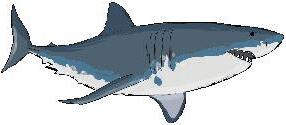
Lungs to get oxygen from air.
1 Ideas pool Look at the pictures. Give more examples of animals that have:


a) teeth.
b) poisonous tentacles.

c) a piercing device.
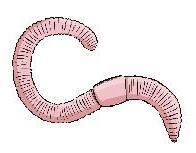
d) powerful mandibles.

e) lungs.
f) gills.

Take note!
Real animals feed in lots of different ways.
39 U2
How do animals interact?
Animals don’t walk or talk like we do, but they can do all sorts of amazing things! Can you imagine being able to fly?!
Animal interaction

Animals have the most developed interaction function of all living beings. They perform the interaction function like this:
They detect changes in the environment
Animals use specialised sense organs to detect sounds, light, smells, tastes, and hot and cold. Animals have many of their sense organs in their head.
They interpret changes in the environment
The nervous system receives signals from the sense organs, interprets them and sends instructions to the locomotor system.
They react to the changes
The locomotor system translates the instructions from the nervous system into movement: running, jumping, chewing, opening eyes, etc.

The sense organs in animals
Cats can turn their to capture sounds better.
Their eyes can see in the dark and can detect movement really well. Cats use touch organs called whiskers or vibrissae to calculate how wide spaces are.

Insects have compound eyes formed by thousands of simple eyes. They see images like a mosaic.


Indy’s ears receive a signal.

...to your owner!
His nervous system interprets the signal and sends instructions: run...

Bats emit sound waves. The waves bounce off objects to create an echo. Their ears capture the echo and use it to calculate the distance to the obstacles. This sense is called echolocation.

40
3
INDYYY! INDYYY! INDYYY!
Locomotor systems in animals

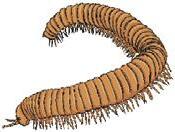

Legs
Long, extendable hind legs for jumping and swimming.
Legs with pincers for grabbing.

Feet with hooves for walking and running on hard surfaces.
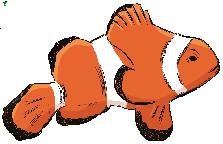

Feet with sticky fingers climbing.
Wings

Wings covered in colourful scales.
Wings formed by membrane between the bones in the fingers.
Pointy legs for walking and climbing.
Fins
Fin-like wings with rigid joints, useful for diving. Rounded fins for swimming gently among sea anemone tentacles.
Pectoral fins for changing direction.

1 Look at the pictures of the dog on the previous page. Write a paragraph about how the dog performs the interaction function. Think about:

a) the signal he detects from the environment.
c) the information he receives from his nervous system.
b) the sense organ he uses.
d) how he reacts.
2 Why do animals have the most developed interaction function of all living beings? Explain.
3 Look at the pictures on this page. Compare the zebra’s legs with the frog’s legs and the gecko’s legs. How are they similar? How are they different? Do you think the differences are related to how these animals live? Explain.


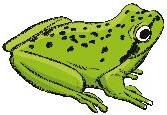
Take note!
Animals perceive the environment and we react quickly to changes.
41 U2
Dorsal fin for balance.
How do animals reproduce?
Animals can reproduce in different ways. For example, some animals lay eggs.

Sexual reproduction
Animals reproduce sexually. There are two different progenitors: one male, and one female. Most animals are unisexual. This means each progenitor has one type of reproductive system:
• The males have a male reproductive system. They make reproductive cells called spermatozoa.
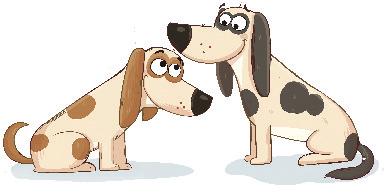


• The females have a female reproductive system . They make reproductive cells called ova.

The reproduction process
It has three stages:
Fertilisation
An ovum and a spermatozoon combine . The result is a called an embryo .
Embryonic development
The embryo is tiny at first. It grows and develops into a new individual. In oviparous animals, the embryo develops outside the mother’s body, inside an egg.
In viviparous animals, the embryo develops inside the female reproductive system.
Birth
When the embryo is fully developed, the young animal emerges. Oviparous young are born – or hatch – from an egg.

Viviparous young come out of the mother’s body during birth.

4
Reproduction step by step
42
Ovum Spermatozoa
Embryonic development
Oviparous Viviparous


The embryo develops inside an egg. It gets food and oxygen from the egg. The period inside the egg is called incubation.
The embryo develops inside the mother’s tummy. It gets food and oxygen from the mother’s body. The period inside the mother’s body is called gestation.
Birth and care
Some offspring are different from the adults. For example, baby butterflies and frogs. Some time after birth, they metamorphose into adults.

Some animals look after their offspring and feed them after birth. Birds and mammals usually do this.

Some offspring are independent as soon as they are born. The adults don’t look after them

1 Define embryo, gestation, hatching, incubation and birth. What part of the reproduction process does each word belong to?
2 Say if these animals are viviparous or oviparous. Then say if the progenitors look after their offspring after birth: kangaroo, toad, duck, crocodile, dragonfly.
Take note!
Animals reproduce sexually. That’s why there are female animals and male animals.

43 U2
How do humans perform the vital functions?

Sometimes the animal characters in stories eat, move and behave like humans.
Just like other living beings, humans also need to perform the three vital functions: nutrition, interaction and reproduction. We use specific organs and systems to perform them.
Human systems for the nutrition function

Digestive system

It performs digestion. In other words, it transforms food into the nutritional substances we need.
Liver Intestines
Heart
Blood vessels
Circulatory system
It transports nutrients and oxygen to all cells in the body. It collects waste from the cells and takes it to the excretory system. It is made up of a network of tubes. The blood flows through these tubes.
Language Bank

Speaking. Ask quick questions about the organs in each system.

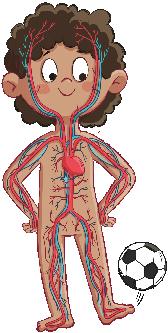
Writing. Choose organs in secret and write about them.
Mouth
Oesophagus
Stomach
Kidneys
Excretory system
It performs excretion. This means it takes waste from the circulatory system and removes it from the body. To do this, the kidneys produce urine.

Nostrils
Lungs
Diaphragm
Respiratory system
It performs respiration by taking oxygen from the air and bringing it to the cells. It also removes carbon dioxide from the cells.
44 5
Human organs and systems for the interaction function
Eyes
Olfactory epithelium (for smelling)
Ears (for hearing)
Taste buds (on the tongue)
Skull
Sense organs
We use these to receive information from the environment and from inside our body. The senses are sight, hearing, taste, smell and touch.
Humerus
Clavicle
Nervous system
It receives information from the sense organs, interprets it and sends a response the locomotor system. It includes the brain and the nerves.
Brain Nerves
Femur
Human systems for the reproduction function
The female reproductive system produces ova in organs called ovaries.

Uterus

Ovary
Pectoral muscles
Abdominal muscles
Locomotor system
It helps us move, supports our organs and lets us stay in different positions. It includes the skeleton and the muscles.


The male reproductive system produces spermatozoa in organs called testicles.

Penis Testicle
1 Say which sense organ detects these stimuli: the colour orange, music, heat, the taste of chocolate, the smell of wet earth.
2 Say which systems these organs belong to:
a) Humerus b) Oesophagus c) Bladder d) Diaphragm
e) Heart f) Olfactory epithelium g) Biceps h) Brain
i) Bronchi j) Liver

Take note!
Our body has characteristicsspecial that let us live.
45 U2
Looking after your body
If we want to play, dance, jump, draw and learn, we need to look after ourselves.
Physical wellbeing
Physical wellbeing means our body works properly and lets us do age-appropriate dayto-day activities, without pain or discomfort. Follow this advice to say physically well:
Language Bank


Speaking. Ask your partner about food likes and dislikes.

Writing. Make a visual chart about the food that you like and the food you don’t.

1 Draw a table in your notebook containing the healthy habits from the illustration below. Write YES or NO beside each one to show if you have the habit or not. Reflect on your results. Say how you can look after yourself better.
Follow good personal hygiene
• Keep your body and hair clean.
• Wash your hands properly and frequently.


• Brush your teeth after each meal.
• Clean and disinfect wounds.
Exercise daily and avoid being sedentary
• Do regular physical activity like walking or cycling etc.
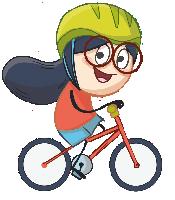

• Do age-appropriate sports.
• Don’t spend too much time watching TV or on a tablet or mobile phone.
Rest and sleep
• Sleep at least nine or ten hours every night.

• Try to always go to bed at the same time.
• Avoid screens before bedtime.
Advice for physical wellbeing
46 6
Pyramid of advice
The food pyramid shows you how often to eat certain foods.
1 Find out about the pyramid. In your notebook, write how often we should eat the foods in the picture.
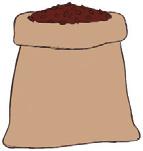


2 Now imagine you are the school cook. Can you create a breakfast, lunch and dinner menu for the Mediterranean diet?



Follow a healthy diet
• Eat the right amount for your age and activity level.
• Eat fresh foods every day: fruit, vegetables, pulses, etc.



• Follow a varied diet.




• Avoid sugary drinks and processed foods.

Avoid behaviours that can harm your health
• Avoid dangerous activities.
• Wear protective equipment when doing sports: helmet, knee pads, etc.
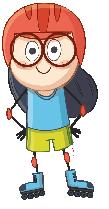





• Protect yourself from extreme cold or heat.

• Use sunglasses and sunscreen, when needed.
Use medical services
• Respect the vaccination schedule.
• Don’t forget regular check-ups.

47 U2
Occasionally Weekly Daily Daily Daily
Looking after your body

Emotional wellbeing
Humans have two really important tools for regulating our behaviour and for making decisions:
• Thoughts help us relate new information to what we already know and to imagine different situations.
• Emotions are moods that depend on our needs, thoughts and wishes.
Humans have some basic needs. When they are met, it help us feel emotionally well:
• Physical needs (enough food, clean air, freedom to move around, protection from the cold, etc.).
• Feeling listened to and accepted by others.
• Appreciating and accepting ourselves they way we are.
• Listening to our emotions and responding in a suitable way.
• Knowing how to ask for help when we need it.
• Living in a pleasant environment that allows us to grow, make plans, improve ourselves and help others.
To find out more about emotional wellbeing, see ‘Let me tell you’ at anayaeducacion.es.




2 Look at the pictures. Match each one with the best description from the text.

48 6
A C D B
Listen to your emotions
Some emotions like anger, sadness and fear are uncomfortable. That doesn’t mean they are negative emotions. Instead of rejecting these emotions, we can learn to listen and understand them. This helps us react in a healthy way.
I’m fear
My mission is to warn you of danger. Sometimes I make mistakes and make you feel scared when you don’t need to be.
When I appear, ask yourself why. Your brain will send you a rational response and you will know how to act.

1 Look at the pictures of Claudia:


a) Do you think Claudia has a reason to feel sad?
b) What emotion will help her feel better?


c) How can she act to feel better?
2 Look at the pictures of Felix:
a) Do you think Felix has a reason to feel angry?
b) What emotion will help him feel better?
c) How can he act to feel better?
My mission is to help you look after yourself when you need to recover from failure or loss. When you feel sad, put your feelings into words and do activities that make you feel better.
My mission is to help you understand how to express yourself when you think something is unfair. When you feel angry, stop and think about whether you have a good reason to feel that way. If you do, don’t react violently. Express yourself calmly but firmly.





Study the situations
FELIX
Take note!

49 U2
Hi!
Hi! I’m sadness
Hi! I’m anger
We need to look after our bodies... but our emotions are important too. ¡ ¡ ¡
CLAUDIA
W hat have I learned?
1 In your own words, explain the nutrition function, the interaction function and the reproduction function.
2 Which word doesn’t belong? animal, autotroph, vertebrate, mobility.
3 What is the main difference between a vertebrate and an invertebrate?
4 Complete the text with the missing words: gills, cells, waste, oxygen, stomach, circulatory, anus, carnivores, mouth, intestine
Sharks
Sharks are ... that eat other fish and different types of invertebrates. Their ... has lots of rows of sharp teeth that they use to chew up their prey. The food then travels through the oesophagus to the ... .

A shark’s ... has folds that absorb most of the nutrients. After this is the rectum. At the end of rectum, the cloaca lets waste exit the body through the ... .
To capture ... from water and expel carbon dioxide, sharks use ... that open directly into the environment through slits in the skin.
Nutrients and oxygen get transported to all the ... in the shark’s body via the ... system. Sharks expel cell ... in the urea. This gets filtered in the kidneys and ends up at the cloaca.
5 Which function in animals do these words belong to?
digestion, heterotroph, respiration, waste
6 The mirror Compare the locomotor systems of these animals: crab, spider and fly. Write the similarities and differences in a table.
7 In your notebook, complete the text with the missing words: locomotor, nervous, sense, perceive.
Animals use their ... organs to ... changes in the environment. The ... system receives signals from the environment, interprets them and send instructions to the ... system. The ... system translates the instructions into movement.
8 Are these statements true (T) or false (F)? Correct the false ones.
a) Animals reproduce sexually.
b) In viviparous animals, the embryo develops outside the mother’s body, inside an egg.

9 The animal in the picture is a duckbilled platypus. Gather the information below and make a fact sheet:

a) Name
b) Description
c) How it feeds
d) What its sense organs are like
e) What its locomotor system is like
f) How it reproduces and how it looks after its offspring
10 Why are these things important for our physical wellbeing?
a) Cleaning and disinfecting wounds.
b) Using sunglasses on very sunny days.
c) Having regular medical check-ups.
d) Eating fruit often.
Don’t forget to complete your photo album for this unit on anayaeducacion.es


Traffic lights. Apply the following colour code next to each activity in your notebook.
I know the answer.
I need help.
I don’t know the answer.
50 PORTFOLIO
TARGET IN ACTION
Make a poster to compare a real animal and a fictional one
1 Choose an animal character you really like from a cartoon, a film, a game, etc. Find out what the real-life animal is like. Then copy and complete the chart:
Animal character Differentiating features Similarities
How is the character different from the real animal? Can it talk? Does it wear clothes? Does it move differently?


What do the character and the real animal have in common? Do they look the same? Do they live in similar places?
2 Time to create your poster! Divide a piece of card in half.
On the left
Write the name of your character. Write information about the film, series or game it’s from, where it lives, how it behaves, etc.
Add photos and drawings to your poster.
Real animal Differentiating features


How is the real animal different from the character? Does it behave differently? Does it feed on something different? Does it look different?
H o w have I learned?
On the right
• Write the name of the real animal. Describe it.
• Add photos and drawings to your poster.
1 In this unit, some things were probably fun to learn and some things were probably hard. In your portfolio, write down three things that were fun to learn and three things that were hard.
2 Now you know that humans are animals. You also know that we need to look after ourselves physically and emotionally. Say three things you do to look after your body and your emotions.

The best part of the unit
The hardest thing to learn ... ... ... ... ... ...
U2 51
?
Which word in each group doesn't belong?
Match the descriptions to the animals:
I have a soft muscular body and a hard shell. I don’t have legs.



What part of the plant am I?
a) I keep the plant upright and I have branches.
b) I perform photosynthesis.

c) I absorb water and mineral salts.
d) I am made up of petals.
e) I make pollen.
f) I contain ovules.
Look at these two animals:
I have a jelly-like body and poisonous tentacles around my mouth.
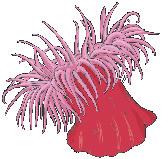
I have thin skin and four legs, and I need to live near water. I have scales, a hard shell and four legs.



My body is covered in feathers. I don’t have teeth and I breathe with lungs.
My body is long and thin and it has rings.
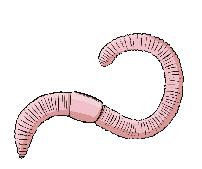
In your notebook, write down where each stage of the nutrition function in plants takes place.
Releasing oxygen (formed during photosynthesis) into the air
a) Do they have anything in common?
b) Write at least five differences.
Photosynthesis
Absorbing oxygen from the air
Transporting the xylem sap and the phloem sap
52
1
3 4 5
2 REPASO REVIEW Plants Algae Fir Heterotrophic nutrition Jellyfish Animals Snail Autotrophic nutrition A A B F E Kingdom protoctista Protozoan Algae Bacteria C Sponge Mushroom Fungi Heterotrophic nutrition D B
LEAF Stem
Root
Making the xylem sap
1 2 3 4 5 6
Use the words to complete the sentences about physical wellbeing:
In your notebook, write down foods you should eat occasionally, weekly or every day.



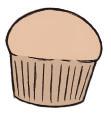



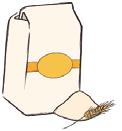


PERSONAL hygiene
DIET healthy SEDENTARY exercise good sleep

a) Follow good ... .... .
b) Do .... every day.
c) Avoid being ...
d) Follow a ... ... .
e) ... at least nine or ten hours every night.
A storybook scientist sTEAM
Margaret Mee was a fantastic artist. She specialised in drawing plants from the Brazilian Amazon Rainforest. Her art helped the world understand the need to protect and look after the Amazon.



Margaret Mee
But there was a flower that eluded Margaret, the most beautiful one of all. It was called the moonflower, and it bloomed on a cactus called Selenicerus wittii.
Scan the code to listen to the complete story.

The moonflower opens at night for just a few hours, and then it dies. That’s why it’s so hard to see. Margaret travelled into the rainforest 15 times to find it. Sometimes she arrived too early. Other times, she was too late. It seemed impossible to find the right moment. But she never gave up!

TERM 1 53
6 7
PROJECTSIMPRINT THATLEAVEAN
DISCOVER THE INTERDISCIPLINARY PROJECT
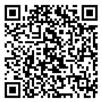
Eco-Action Magazine
ECO-ACTION
What is composting and how can it help the planet? Find out and try it yourself!
Can you write an article about composting for the magazine?
Waste is what happens when we don’t know what to do with something or when we throw something away.
What happens to food waste?


What is organic waste? What bin does it belong in? What can we do with organic waste?
What is composting?
Brainstorm all the questions that come to mind. The answers will be really interesting! We are environmentally responsible!
Composting uses waste organic matter. Find out about composting and become an expert.
What questions do you want to answer in your digital magazine?
Assign the questions to different groups.
Remember: you are trying to find useful, simple information.
Time to investigate!
54
C
P i ensa
2 PRESENTA D iseña DESIGN 1
ONSTRUYE
THINK
Put the information in order. Use simple language so readers understand what composting is. Include photos and illustrations to support your message. Run a spellcheck and reference your sources. You must respect intellectual property!


4 PRESENTA PRESENT
Is your article ready?

Read it together in detail. This is really important. Invite other classes to the presentation. Present your work enthusiastically so that other students feel motivated to write articles for the magazine. Share your knowledge to help the planet!
omprueba
What did you learn?
How can you apply your new knowledge?
I’m very curious to learn that...
Why was this project useful?
TERM 1 55
3 C
ONSTRUYE BUILD
C onstruy e C
CHECK 5 P resent a
© GRUPO ANAYA, S.A., 2023 - C/ Valentín Beato, 21 - 28037 Madrid.
All rights reserved. No part of this publication may be reproduced, stored in a retrieval system, or transmitted, in any form or by any means, electronic, mechanical, photocopying, recording, or otherwise, without the prior permission of the publishers.





















































































































































































































































































